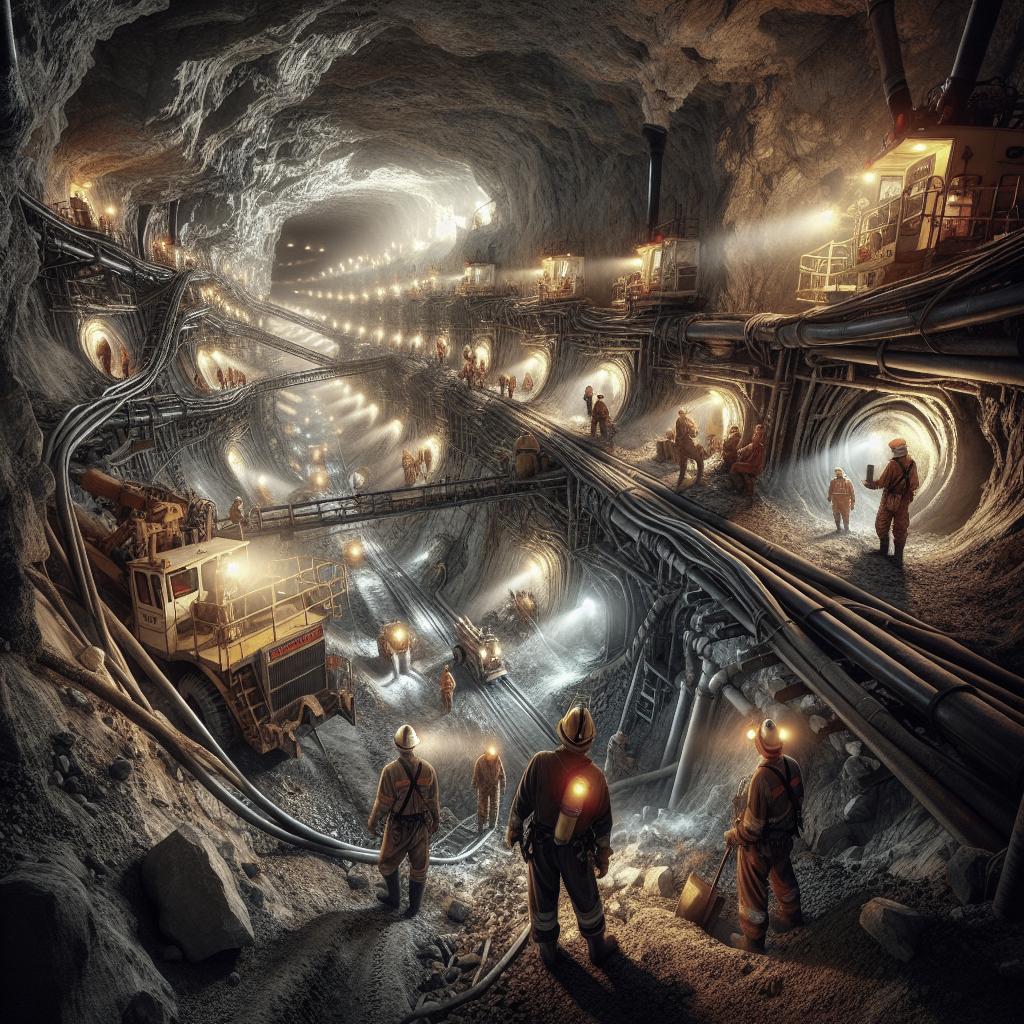<>
“`
Introduction
Gold has been one of the most sought-after precious metals for millennia, and its extraction has evolved significantly over time. While retrieving gold from the surface has become a simpler task due to advancements in mining technologies, delving into the depths of the Earth to unearth this yellow metal presents unique challenges. In this blog post, we’ll examine the intricacies of deep-level gold mining, focusing on the key challenges faced during the process, with specific insights into the world’s deepest open pit and underground mines. We will also identify notable companies engaged in deep mining ventures, providing a comprehensive understanding for potential investors.
Prospecting for Deep Deposits
The journey of deep-level gold mining starts with prospecting for deep gold deposits. Unlike surface mining, geologists and mining engineers must rely on sophisticated techniques to detect these hidden treasures. Geophysical surveys, including seismic and magnetic methods, are crucial for mapping underground formations. These methods provide a snapshot of the subterranean landscape, helping to identify promising locations for further exploration. Drilling deep into the Earth to obtain core samples is another essential step. These samples are analyzed for mineral content, offering clues about the presence and concentration of gold. However, this process can be highly costly, time-consuming, and fraught with uncertainties. Despite the financial and logistical challenges, the initial exploration and verification stages set the foundation for subsequent mining efforts.
Mining Deep Deposits
Once a profitable deep gold deposit is confirmed, the actual mining process can begin. Unlike surface mining, deep-level mining involves digging tunnels and shafts extending several kilometers underground. This presents engineering and technical complexities such as ensuring structural integrity, adequate ventilation, and the management of extreme temperatures, which can soar up to 60 degrees Celsius. Safety is a paramount concern. The deeper the mines, the higher the risks of cave-ins, rock bursts, and flooding. Advanced safety technologies, including automated drilling equipment, remote-controlled machinery, and real-time monitoring systems, play a critical role in mitigating these hazards. Moreover, maintaining a robust support system for workers—providing necessary training and ensuring emergency preparedness—forms the backbone of any deep mining operation.
Bingham Canyon: The Deepest Open Pit in the World
Bingham Canyon Mine, located in Utah, USA, is renowned as the deepest open pit mine globally. Originally opened in 1906, the mine has continually expanded and now reaches depths of over 1.2 kilometers. Its extensive scale offers distinct advantages, such as the ability to utilize heavy machinery for excavation and transport of ore, which boosts operational efficiency. However, such a vast open pit also presents problems. Environmental concerns, including land degradation and water contamination, require ongoing management. Additionally, the constant threat of landslides necessitates rigorous monitoring. Cutting-edge technology and stringent environmental regulations are crucial for addressing these issues while maintaining the mine’s productivity.
Mponeng: The Deepest Underground Mine in the World
The Mponeng Gold Mine in South Africa holds the title for the deepest underground mine, reaching staggering depths of over 4 kilometers. The logistical complexity of operating at such extreme depths is immense. Engineering solutions need constant innovation to address the challenges of rock stability, elevated temperatures, and the sheer difficulty of transporting materials to and from the surface. Health and safety measures are paramount at Mponeng. The physical and psychological strain on miners working in such an environment necessitates meticulous planning and support. Moreover, Mponeng’s operations have been significantly optimized through automation and state-of-the-art mining technologies, highlighting the industry’s relentless push toward greater efficiency and safety.
Investor Takeaways
For investors interested in deep-level gold mining, understanding the inherent challenges and the corresponding mitigation strategies is crucial. High initial capital expenditures for exploration and continuous investment in safety and environmental measures are necessary but often lead to substantial returns. The presence of advanced technology, coupled with robust operational protocols, can significantly offset these challenges. Investors should closely examine the track record of mining companies, their technological capabilities, and their commitment to sustainable practices. Diversification in investment portfolios, including a mix of companies operating in both surface and deep mining, can help mitigate risks while capitalizing on the high reward potential of deep-level gold mining ventures.
List of Companies Mentioned
1. Rio Tinto – Operates the Bingham Canyon Mine. 2. AngloGold Ashanti – Manages the Mponeng Gold Mine.
| Section | Main Points |
|---|---|
| Introduction | Overview of challenges in deep-level gold mining; focus on prospecting, mining processes, and specific mines. |
| Prospecting for Deep Deposits | Geophysical surveys; Drilling and core sampling; Financial and logistical challenges. |
| Mining Deep Deposits | Tunnel and shaft engineering; Safety concerns and technologies; Worker training and emergency preparedness. |
| Bingham Canyon: The Deepest Open Pit in the World | Scale and depth; Environmental management; Landslide risks and monitoring. |
| Mponeng: The Deepest Underground Mine in the World | Extreme depths; Engineering challenges; Worker health and safety; Technological innovations. |
| Investor Takeaways | Importance of understanding challenges and mitigation; High returns vs. initial costs; Evaluating company track records. |
| List of Companies Mentioned | Rio Tinto (Bingham Canyon Mine); AngloGold Ashanti (Mponeng Gold Mine). |
“`


